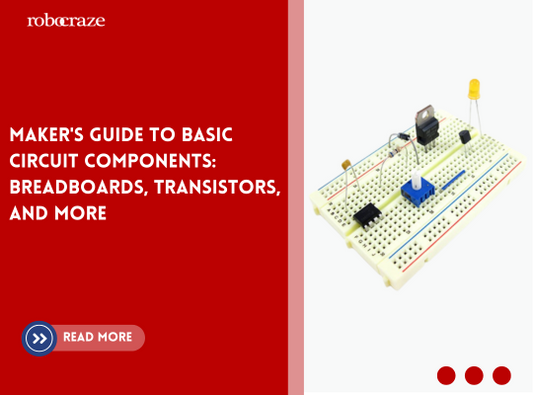Introduction
The Arduino Mega is a complete, feature-rich and high performance microcontroller motherboard based around the ATmega2560, a supersized version of the popular ATmega328 processor. With a full 54 digital I/O pins plus 16 analog inputs and more memory capacity, speed and I/O options compared to the standard Arduino Uno or Leonardo boards, the Arduino Mega is geared up for more demanding hardware and software projects that require sophisticated programming.

The Mega 2560 has become a staple across electronics hobbyists and tech enthusiasts owing to its versatility, power and compatibility with both open source and proprietary systems. As a bigger brother to the controller boards that made Arduino a household name, it retains that ease-of-use ethos whilst packing a mighty punch for ambitious Arduino creations. We'll see why this board has etched out such a big niche across robotics, IoT, printing plus industrial applications as we explore its specs and capabilities.
Main Features and Specifications
The main features and specifications that define the unique selling points of the Arduino Mega 2560 include:

Microcontroller
The Mega 2560 utilizes the ATmega2560 chip, an 8-bit high performance RISC-based microcontroller running at 16 Mhz with 256KB flash memory, 8KB SRAM and 4KB EEPROM storage. This paves the way for larger sketches and more variables than standard Arduino boards.
Operating Voltage
Standard 5V logic voltage shared with all other classic Arduino boards makes shifting existing systems and code over to the Mega straightforward. An on-board voltage regulator means it can work across 7-20V DC if supplied via the power jack.
Digital I/O Pins
A mammoth 54 digital input/output pins deliver serious interfacing capabilities for lights, sensors, motors, switches and other devices far exceeding the 14-20 pins typical Arduino users have to play with. 15 of these pins can generate PWM outputs for variance in voltage, essential for key applications like motor speed control.
Analog Input Pins
As well as PWM digital outputs, the Mega comes loaded with 16 discrete analog inputs via header pins accessed either single-ended (measurements relative to a common ground) or differential (voltage measured between any two pins) by the 10-bit ADC converter onboard delivering 1024 levels of measurement.
Flash Memory
Whereas mainstream Arduino boards are somewhat constrained by 32 or 128KB of flash storage for housing programs, the Mega 2560 ticks over thanks to an ample 256KB flash memory to accommodate large sketches, libraries and coding options that dwarf less powerful compatriots.
SRAM
Supplementing the onboard flash storage for primary user program storage is 8KB of fast SRAM used for temporarily storing and manipulating variables plus other dynamic data on the fly during code execution before shifting it to longer duration backup in EEPROM if needed. Again, this outpaces standard Arduino boards significantly.
EEPROM
Rounding out the storage capacities, 4KB of specialized EEPROM memory offers a versatile way to permanently keep smaller batches of data stored on the Mega itself such as network or device settings that needs loading every time it boots up rather than losing them each time the power cycles.
Clock Speed
Like virtually all Arduino-coded boards, the Mega 2560 utilizes a 16Mhz resonator to drive all those internal operations efficiently without excessive power draw. It's robust and proven quartz timing.
Key Benefits and Use Cases
Why has the Arduino Mega become such a hit? What capabilities explain the enduring popularity years after launch? We can boil it down to core advantages:
More Memory and Storage
The ATmega2560 MCU combined with 256KB flash plus 8KB SRAM and 4KB EEPROM tallies up to serious coding capacity and variables manipulation ability compared to any entry-level or mid-tier Arduino product. You can implement more sophisticated programs and process bigger data.
Increased Digital/Analog I/O
Load up sensors, indicators, motors or peripherals that integrate via multiple digital and analog points simply not possible for standard Arduino boards where pins are scarce. Whether using headers, ICSP or dedicated ports, the Mega 2560 has connectivity to spare.
Backward Shield Compatibility
Despite the boosted specs way above baseline Arduino boards, the Mega retains compatible board shape and layout that allows using nearly all the add-on Arduino shield daughterboards already on market. This protects existing investments.
Complex Arduino Projects
For hobbyists, engineers and developers needing to drive more sensors, mechanical options and expand prototyping horizons into heavy duty mechatronics, robotics or Internet-of-Things builds, the minimal investment to step into a Mega 2560 can pay dividends in realizing next-level plans that humble Arduino boards just cannot match.
CNC Machines/3D Printers
One realm where Arduino Mega boards have cemented status thanks to the versatility of low-cost open source hardware and software is running the sensitive mainboard guts within CNC mills, 3D printer rigs and similar computer-directed precision machinery needing strong outputs and inputs.
Drones/UAVs
Leading on from manufacturing robots and printers, yet another specialized field of complex electronics and mechanics where hardcore Arduino controllers get pushed to their limits is crafting homemade or commercial drone rigs. The extensive activities demanded to balance and operate multi-rotor aircraft need a Mega 2560 class board.
Popular Projects
What specific niches has the Arduino Mega 2560 carved out an unshakeable status for hobbyist makers and electronics engineers? We spotlight some of the leading applications you'll discover the Mega at the heart of across YouTube, Instructables and specialist forums.
CNC Machines
From basic 3-axis milling machines to 5-axis routing systems, the Arduino Mega 2560 has the digital and analog facilities to handle advanced coordination of stepper motors, drivers, servo mechanisms and more required to guide CNC cutting.
Drones/UAVs
Managing stable flight via arrays of speed controllers, gyros, accelerometers etc pushes Arduino boards to their limits, making the Mega 2560 a great match for multi-rotor drones at the DIY through semi-pro scale given abundance of connectivity.
Automated Greenhouses
When constructing all-in-one gardening frameworks with filtration, fertilization, humidity control, lighting and irrigation mechanics needing centralized coordination rather than separate modules, the Mega 2560 affords ample capacity.
Home Automation
For whole-house or apartment Arduino automation build outs encompassing dozens of sensors, relays plus indicators dispersed across rooms, the ample I/O and memory lends itself well to these intricate networks.
Getting Started with Arduino Mega
Unboxing a shiny new Mega 2560 is just the start on the journey towards deploying this microcontroller powerhouse within your imaginative Arduino-based projects. What's needed to commence?

What's In The Box
An authentic Arduino Mega 2560 includes the mainboard itself, a lightweight AC wall adapter delivering the called for 7-12V DC via barrel jack plus a USB Type B cable for programming direct from a desktop PC interface without standalone power supply required.
Setup and Testing
Out of the box, plug in the AC adapter to provide juice or connect the USB cable to a computer USB port if battery power's not imperative for initial testing. Download the Arduino IDE software then connect the board directly to commence flashing starter tutorials like the classic LED blink sequence to validate everything functions as intended.
Blink Test
As that crucial first step to validate the Mega 2560 build integrity without other peripherals getting in the way, verify simple command delivery by loading the built-in blink example sketch to flash an integrated LED on and off at one second intervals. Congrats, it's alive!
Conclusion
Boasting a formidable specs advantage over popular Arduino boards in its wake yet embracing the same underlying ease-of-use philosophy, the Arduino Mega 2560 stands tall as a pivotal workhorse controller for makers wanting to push boundaries into CNC, drones, home-brew automation plus industrial-grade projects.
With coding capacities promoted thanks to plentiful memory abilities complementing vast I/O pin options, Arduino tinkerers can leverage the Mega 2560 to sharpen 21st century mechatronics skills whatever their experience level or budget. Just ensure buying from authorized suppliers.
Have you deployed an Arduino Mega 2560 at the center of any personal electronics endeavors and passion projects? We'd love to hear your experiences or see the outcomes! Post your Mega-based creations in the comments.















